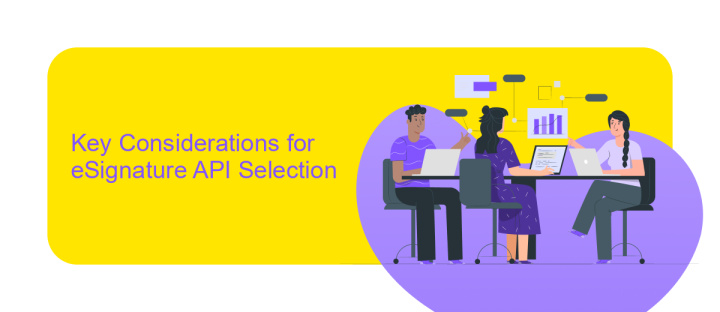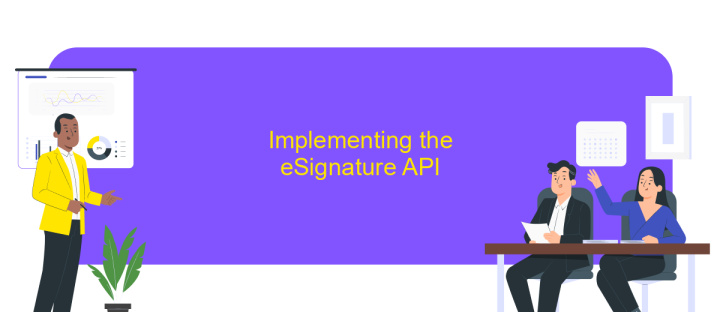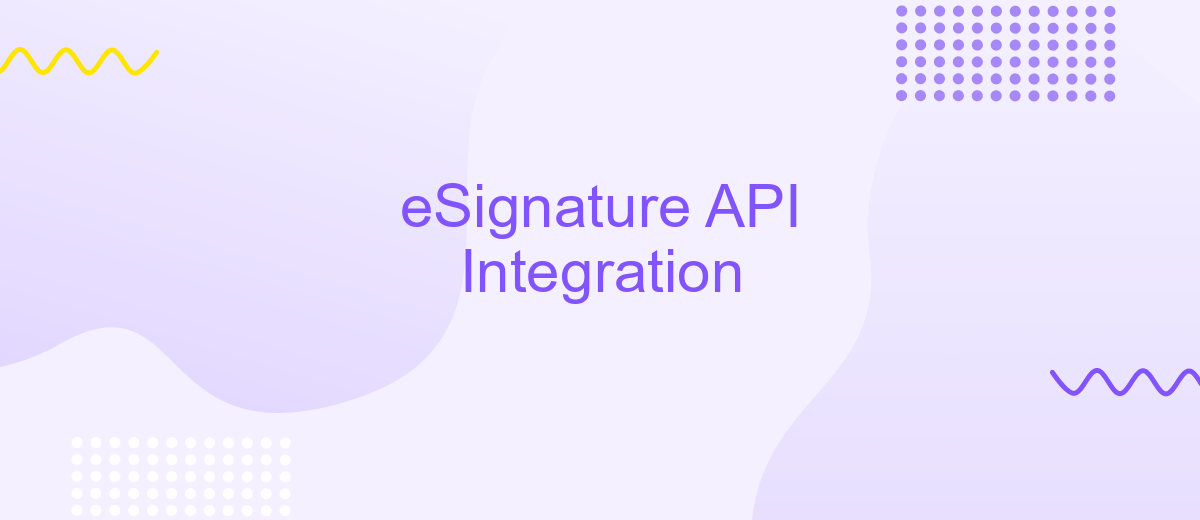eSignature API Integration
In today's digital age, integrating eSignature APIs into business processes has become essential for enhancing efficiency and security. eSignature APIs enable seamless electronic signing of documents, eliminating the need for physical paperwork and expediting workflows. This article explores the benefits of eSignature API integration, the key features to look for, and how businesses can leverage these tools to streamline operations and improve customer experiences.
Introduction to eSignature API Integration
In today's digital age, the ability to sign documents electronically has become an essential component for businesses aiming to streamline operations and enhance user experience. eSignature API integration offers a seamless way to incorporate electronic signature functionality into your existing applications, enabling secure and efficient document handling. By automating the signing process, organizations can save time, reduce costs, and improve workflow efficiency.
- Enhance security and compliance with industry standards.
- Reduce paperwork and associated costs.
- Improve customer experience with faster document processing.
- Enable remote signing, increasing accessibility and convenience.
- Facilitate seamless integration with existing systems and workflows.
Implementing an eSignature API allows businesses to leverage advanced technology to meet the growing demand for digital solutions. As more industries transition to paperless environments, integrating eSignature capabilities becomes a strategic move to stay competitive. By choosing the right eSignature API, companies can ensure compatibility with various platforms, maintain data integrity, and offer a user-friendly signing experience. This integration not only supports sustainability goals but also positions businesses for future growth in an increasingly digital world.
Key Considerations for eSignature API Selection

When selecting an eSignature API, it is crucial to evaluate the compatibility with your existing systems and workflows. Ensure that the API supports the platforms and programming languages your team uses, and check for comprehensive documentation and support resources. Additionally, consider the API's scalability to accommodate future growth and its ability to handle high volumes of transactions without compromising performance. Security is another vital factor; look for APIs that offer robust encryption, authentication, and compliance with industry standards such as GDPR and eIDAS.
Another key consideration is the ease of integration. Opt for an API that offers seamless integration capabilities, such as pre-built connectors or third-party integration services like ApiX-Drive, which can simplify the setup process and reduce the need for extensive coding. Evaluate the API's features, such as customization options, user interface, and workflow automation, to ensure they align with your business needs. Finally, consider the cost structure, including any hidden fees, to ensure it fits within your budget while providing the necessary functionality and support.
Implementing the eSignature API

Integrating an eSignature API into your application can streamline document signing processes, enhancing both efficiency and user experience. To begin, ensure that you have selected an API provider that aligns with your business needs, offering the necessary features and compliance standards. Familiarize yourself with the API documentation to understand its capabilities and requirements.
- Register for an API key through the provider's developer portal to gain access to their services.
- Set up your development environment by installing any required libraries or SDKs provided by the API vendor.
- Authenticate your application using the API key to establish a secure connection with the eSignature service.
- Implement the API endpoints for creating, sending, and managing documents that require signatures.
- Test the integration thoroughly in a sandbox environment to ensure all functionalities work as expected.
Once the eSignature API is successfully integrated, monitor its performance and user feedback to identify areas for improvement. Regularly update your implementation to accommodate any changes in the API or to enhance its features. By doing so, you ensure a seamless and secure digital signing experience for your users.
Best Practices and Optimization Strategies

Integrating an eSignature API into your application can greatly enhance user experience and streamline workflows. To ensure a seamless integration, it is crucial to follow best practices that prioritize security, usability, and performance. Begin by thoroughly understanding the API documentation, which will help you leverage its full potential and avoid common pitfalls.
Security should be a top priority when dealing with electronic signatures. Implement robust authentication mechanisms and encrypt data both in transit and at rest to protect sensitive information. Additionally, ensure compliance with relevant regulations such as eIDAS or ESIGN to maintain legal validity of the signatures.
- Optimize API calls to reduce latency and improve performance.
- Implement thorough error handling to manage exceptions gracefully.
- Regularly update your integration to align with API changes and enhancements.
- Conduct rigorous testing to ensure compatibility across different devices and platforms.
By adhering to these best practices, you can optimize your eSignature API integration, resulting in a more reliable and efficient application. Continuous monitoring and iteration will help you identify areas for improvement and keep your integration up-to-date with the latest technological advancements.


Troubleshooting and Common Issues
When integrating an eSignature API, encountering issues is not uncommon. One frequent problem is authentication errors, which often arise due to incorrect API keys or expired tokens. To resolve this, ensure your API keys are up-to-date and correctly configured in your application. Additionally, verify that your server's time settings are synchronized, as time discrepancies can lead to token validation failures.
Another common issue is data formatting errors, which occur when the API receives unexpected input. To troubleshoot, double-check the API documentation for the correct data structure and ensure your payload matches the expected format. If integration complexities persist, consider using services like ApiX-Drive, which simplifies the process by offering user-friendly tools for connecting and managing APIs. This can significantly reduce the time spent on debugging and enhance the overall integration experience, ensuring a smoother workflow and more reliable eSignature functionality.
FAQ
What is an eSignature API, and why should I integrate it into my application?
How do I choose the right eSignature API for my needs?
What are the basic steps involved in integrating an eSignature API?
How can I automate the integration process of an eSignature API?
What security measures should I consider when using an eSignature API?
Time is the most valuable resource for business today. Almost half of it is wasted on routine tasks. Your employees are constantly forced to perform monotonous tasks that are difficult to classify as important and specialized. You can leave everything as it is by hiring additional employees, or you can automate most of the business processes using the ApiX-Drive online connector to get rid of unnecessary time and money expenses once and for all. The choice is yours!

